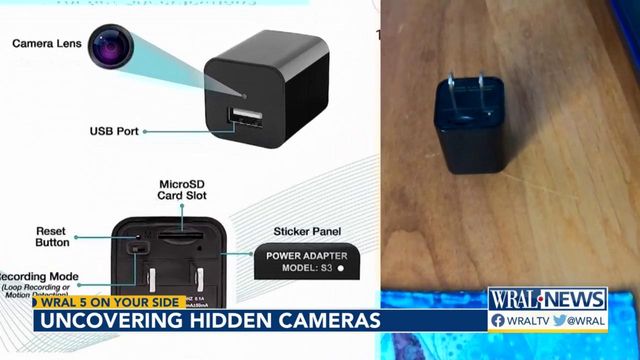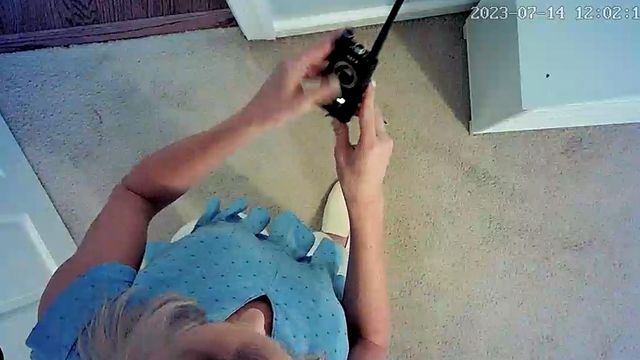Hidden cameras can be anywhere; small device can help you detect them
Cameras disguised as everyday items, hidden in a vacation rental or hotel, can invade your family’s privacy, and you may never even know.
We’ve seen it happen, but how do you prevent it?
As easy as it is to buy a hidden camera online, it’s just as simple to buy a hidden camera detector. To find out how well detectors work, 5 On Your Side tested them out.
Our team hid four different types of cameras in a home. One was disguised as a USB adapter, and another looked like a smoke detector. Two other cameras were hidden in discrete locations. All were purchased online for between $20 and $50.
WRAL consumer reporter Keely Arthur had to use two camera detectors to find them without knowing what the cameras looked like or where they were placed. Those detectors also sell online for $40 to $50.
After training on the detectors, Keely searched two rooms for the hidden cameras using two main features on the detectors — a red light that highlights camera lenses and a beep that alerts you to wireless signals.
It took nearly six minutes of searching to find the first camera hidden in a stuffed toy. However, the same detector passed right over two other cameras without alerting.
The team switched to the second detector, which quickly alerted on a hidden camera in the smoke detector.
Keely spotted a third camera with the lens-finding light.
"There’s certain optics in there that are going to reflect light a little bit differently than, say, a pane of glass," explained Tracy Wallace, cybersecurity expert and director of content at INE.com.
The detectors alerted on a camera hidden in the smoke alarm and a camera hidden in a stuffed toy because they were connected to WiFi and sending out a signal, and the other cameras weren’t. That’s why Wallace says the lens light is a critical feature.
"We saw it was detecting, but then it also has got the actual visual indicator which I think is really useful and probably of the two, maybe even more important," Wallace said.
In 20 minutes, Keely was able to find three of four cameras, but both detectors also gave off a lot of false alerts.
"You need to know what a positive looks like, and you’re going to get false positives," Wallace warned.
Knowing what a positive looks like means testing it out on your cell phone, computer, WiFi hot spot or something else you know is transmitting a signal. Also, test to know what it it looks like when the light on the detector highlights a camera.
"Even knowing I’m supposed to be looking for these [cameras] and I have the devices, it’s really hard," Keely said after the test.
These devices did work in our test and Wallace agreed with our findings.
The device that worked better for our team was one with a view-finder that made it significantly easier to spot camera lenses. It costs $45.99 on Amazon.











